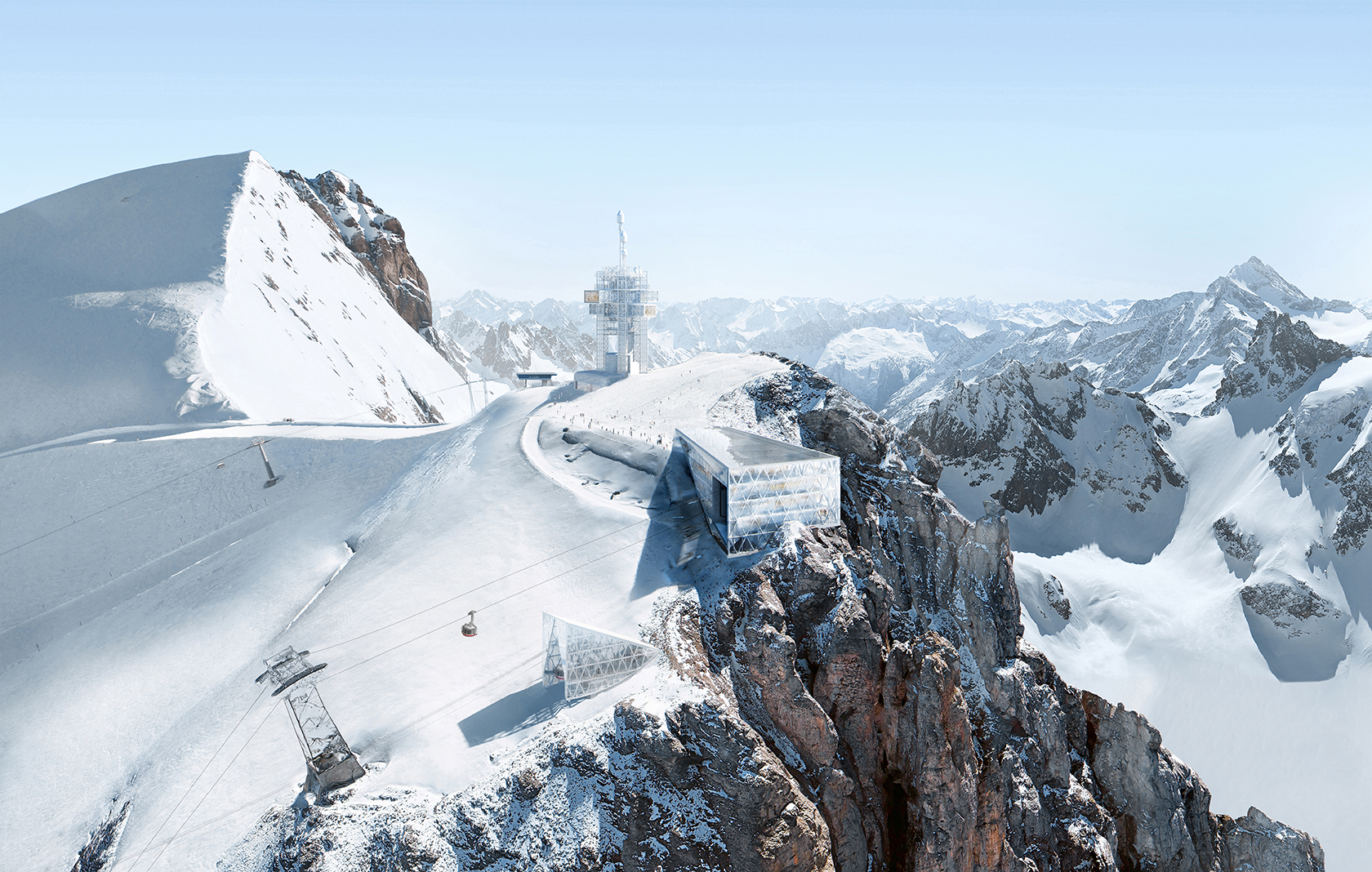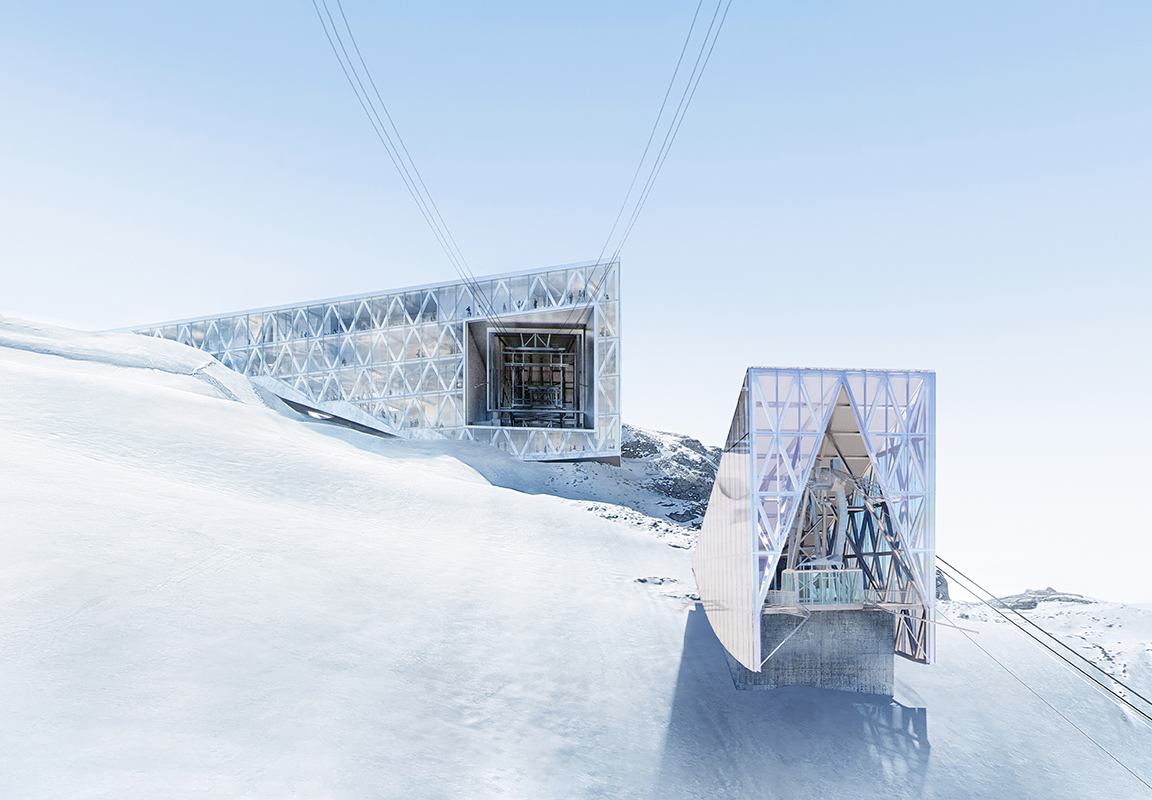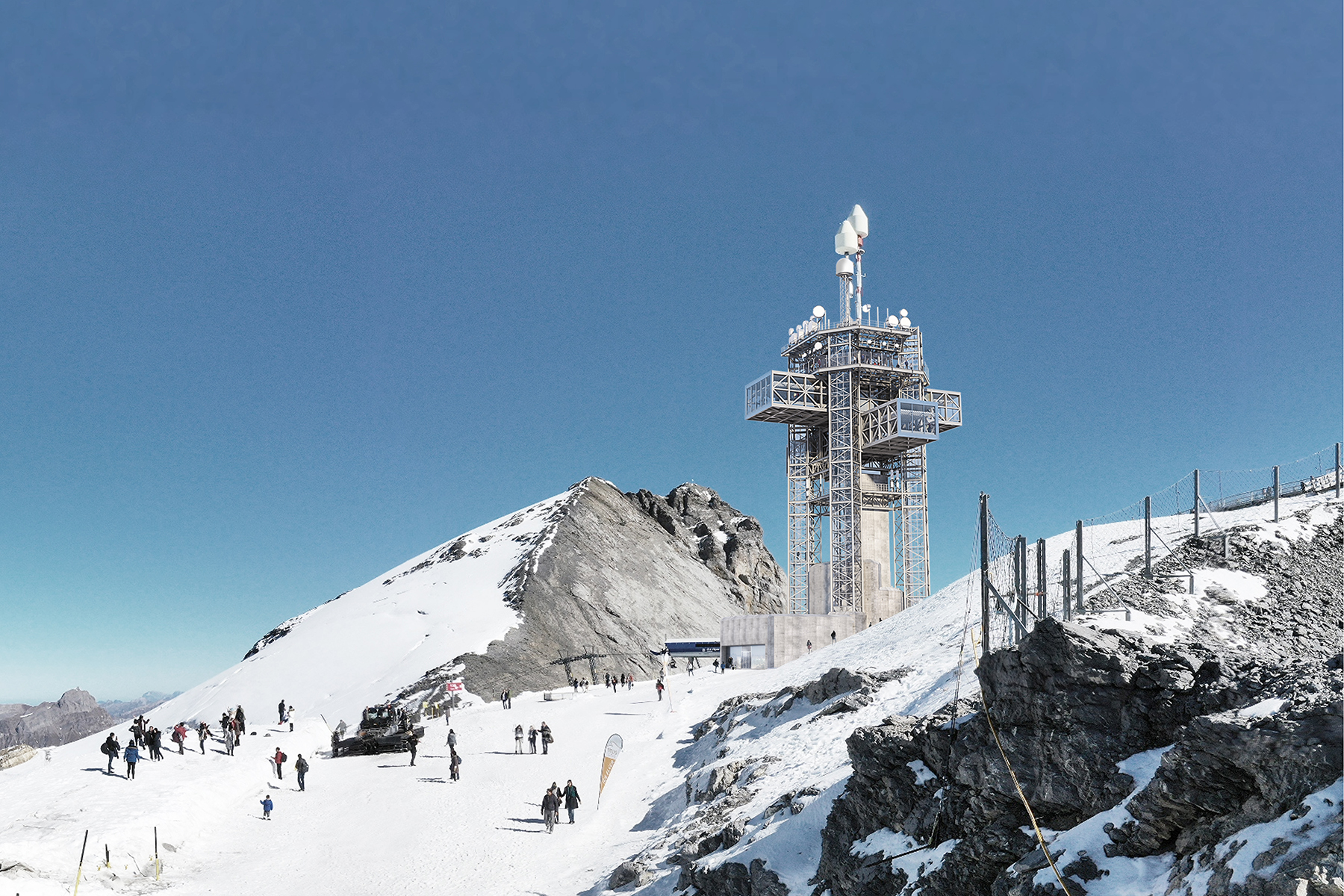The resort area at Mount Titlis, near Engelberg, in the Swiss Alps has big plans to modernize and expand its current facilities. The project involves the design and construction of a new, larger mountaintop station — dubbed the Titlis Bergstation — that will house a restaurant, shops, a large hall, and other amenities. The project will also repurpose and structurally strengthen an existing 52 m tall telecommunications tower at the summit and add new levels for public use. In addition, a second cable car will be added to the site to provide better access for tourists.

The new infrastructure is part of a master plan for the region known as “Titlis 3020” for the mountain station site’s 3,020 m elevation above sea level. It was developed by the Swiss architecture firm Herzog & de Meuron for the owner of the site’s facilities, Titlis Bergbahnen, Hotels & Gastronomie. Basel, Switzerland-based Schnetzer Puskas Ingenieure is the structural engineer for much of the project, which will cost roughly 100 million Swiss francs ($111 million).
Construction has been delayed due to the COVID-19 global pandemic and is expected to start in late 2021, with the work likely to be completed over a period of four to five years, notes Kevin Rahner, Ph.D., an engineer and the responsible partner for the Titlis project at Schnetzer Puskas.
Building a completely new station was the best solution because the original mountain station was constructed in the 1960s and had already been renovated several times, according to Rahner. The existing station building will be demolished and portions of its foundations reused to support the new station, notes Spyridon Daglas, a Schnetzer Puskas structural engineer.
The original cable car was most recently renovated in 1992 with the debut of the Titlis Rotair, the world’s first revolving cable car. It will remain in use throughout construction and after.
Because the tourist facilities will remain in operation during the construction phase, a portion of the new mountain station will be constructed around the existing station before that facility is demolished. This will ensure that the public has access to the existing cable car, which operates on the north side of the existing station, says Daglas. The new, second cable car will be constructed approximately 50 m northwest of the original system, he adds.
The second cable car is being added to help the existing Rotair system accommodate the crowds of visitors during peak tourist times and to provide a second escape route off the mountain in the event of an emergency. Although Schnetzer Puskas is designing the cable car facilities at the summit, another firm — the Austrian company Doppelmayr/Garaventa Group — is responsible for the cable car system itself, including the structures and supports located along the cable car’s route along the mountain’s slope.

Construction challenges
One of the most important functions of the second cable car, however, will be fulfilled primarily during the construction phase of the project. There is no road or rail access to the summit, Rahner explains, and flying in most of the building materials by helicopter would become prohibitively expensive. That leaves the cable cars — initially just the existing cable car system but later the second system to do the bulk of this transportation so that the Rotair cars can continue to carry tourists.
The new mountain station will feature a concrete and steel composite framing system, and additional steel will be used to support the refurbished tower. Although the designs are intended to minimize how much of each material will be required, one glaring challenge cannot be avoided. “We have to bring every single thing up the mountain,” Rahner says.
Throughout the construction phase, the capacity of the cars will be limited to roughly 5 metric tons per trip — the material will be slung underneath the car — and the structural elements will be restricted to lengths of no more than 8 m. Other challenges will include a prohibition of on-site welding because of the summit’s extreme temperatures, which can drop to minus 30 C in the winter. As a result, all connections will be bolted. To avoid carrying rocks in the cable cars, the project will produce its own concrete atop the mountain, using the material excavated for the new mountain station and the second cable car facilities to create the aggregate, Rahner says.
Aligned east to west, the structure of the new mountain station will feature an inclined concrete slab at its base, with only the middle portion founded directly on mountain rock; the north and south edges will both cantilever, says Daglas. The east end of the structure will follow the mountain slope, Daglas adds, and micropiles will be used in locations that will feature concentrated loads. Tilted steel columns will work in either tension or compression – according to a geometric pattern that will help achieve the architect’s vision of a seeming “crystalline structure that grows from the rock,” Daglas explains. Steel diagrid trusses will play an important role in the vertical and horizontal load transmission. They will also support the glazed facade, with an external posttensioned cable system planned for the station’s south side, he adds.
Tower transformation
The existing telecommunications tower dates to the 1980s and had originally been used by the Swiss army. Located about 200 m to the east of the mountain station, it has not previously been open to the public. But newer communications technology means that the military no longer needs the tower’s antennas, Rahner says, so the tower itself has become available for reuse. The surrounding site already is part of a tourist attraction that opened in 2012 — the Titlis Cliff Walk, which overlooks a 500 m deep glacial gorge and is considered the highest suspension bridge in Europe.
The tower is founded deep into the mountain rock, Rahner notes, and features exposed, galvanized steel framing consisting of four vertical lattice structures rigidly connected to each other by smaller lattice girders. As part of the Titlis 3020 effort, the existing tower will be reinforced, and two new cantilevering sections will be installed near the top of the structure to house tourist amenities, including a bar, restaurant, and observation area. The new crisscrossing levels, framed in steel and glazed, will measure approximately 32 m long and 12 m wide each, Rahner says.





